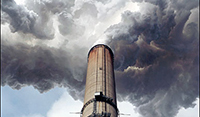 Large banks have paid out more than $87 billion in fines and settlements to resolve allegations about the sale of toxic securities in the period leading up to the financial meltdown a decade ago. Another $43 billion was paid out in connection with mortgage abuses.
Large banks have paid out more than $87 billion in fines and settlements to resolve allegations about the sale of toxic securities in the period leading up to the financial meltdown a decade ago. Another $43 billion was paid out in connection with mortgage abuses.
It’s unclear whether these unprecedented penalties had any lasting deterrent effect. As has been made clear in the Wells Fargo scandal, bad bank behavior has hardly disappeared. And now the financial services industry is pushing to weaken the modest restrictions implemented under the Dodd-Frank Act.
Imagine how different things might be if the federal government had the tools and the inclination to hold top bank executives personally responsible for the reckless and fraudulent behavior of their institutions. What if, instead of making payouts that they regarded as a tolerable cost of doing business, financial CEOs found themselves behind bars?
This tantalizing prospect is made a bit more real in legislation recently introduced by Sen. Elizabeth Warren: The Ending Too Big to Jail Act.
One component of the bill would require top executives of banks with more than $10 billion in assets to certify annually that they have conducted due diligence and found no criminal conduct or civil fraud within their institution. This would make it easier to bring individual prosecutions when it turns out that such certifications were false.
Another portion of the bill would create a permanent investigative unit for financial crimes. Designed along the lines of the Special Inspector General for the Troubled Asset Relief Program, which brought successful cases against executives at smaller banks, it would be known as the Special Inspector General for Financial Institution Crime. Properly funded, this unit could take on expensive and complicated cases.
Finally, the bill would mandate judicial oversight of deferred prosecution agreements, or DPAs. Along with the failure to prosecute top executives, the Obama Justice Department also continued the dubious practice that started under Bush of making numerous deals with large corporations by which they escaped prosecution for their transgressions, on the condition that they paid a financial penalty and promised to end the offending behavior. Since 2003 about 140 DPAs have been created, along with a larger number of cases involving a variant, the non-prosecution agreement.
It is unclear how much effort the Justice Department put into enforcing the DPAs. Warren’s bill would give the courts the power to oversee compliance with these agreements. In fact, it would require courts to determine whether a proposed DPA is in the public interest.
Finally, the legislation would require the Justice Department to establish a searchable database of DPAs. Until that comes into existence, you can use Violation Tracker to find information on more than 300 DPAs and NPAs.
Warren’s bill would greatly advance the kind of law and order the country truly needs.
 The SEC’s enforcement action against Theranos Inc. and its founder Elizabeth Holmes puts a new focus on the persistence of corporate crime in the healthcare sector after a period in which the business culprits getting the most attention were banks such as Wells Fargo and automotive companies such as Volkswagen and Takata.
The SEC’s enforcement action against Theranos Inc. and its founder Elizabeth Holmes puts a new focus on the persistence of corporate crime in the healthcare sector after a period in which the business culprits getting the most attention were banks such as Wells Fargo and automotive companies such as Volkswagen and Takata. Bipartisanship has returned to Washington, thanks to the overwhelming desire of Republicans and quite a few Democrats to roll back portions of the Dodd-Frank Act. Ten years after the onset of the financial meltdown and seven years after the law went into effect, the relentless efforts of the banking lobby seem to be paying off.
Bipartisanship has returned to Washington, thanks to the overwhelming desire of Republicans and quite a few Democrats to roll back portions of the Dodd-Frank Act. Ten years after the onset of the financial meltdown and seven years after the law went into effect, the relentless efforts of the banking lobby seem to be paying off. At a moment when there is all too much talk in Washington about deregulation, a helpful counterpoint has arrived from the Political Economy Research Institute in the form of the latest edition of the
At a moment when there is all too much talk in Washington about deregulation, a helpful counterpoint has arrived from the Political Economy Research Institute in the form of the latest edition of the